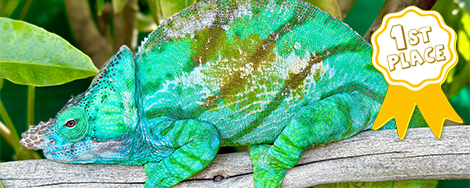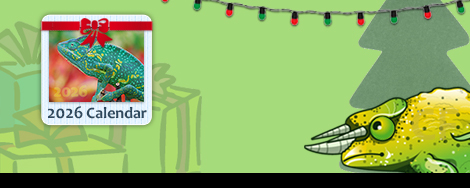Navigation
Install the app
How to install the app on iOS
Follow along with the video below to see how to install our site as a web app on your home screen.
Note: This feature may not be available in some browsers.
More options
You are using an out of date browser. It may not display this or other websites correctly.
You should upgrade or use an alternative browser.
You should upgrade or use an alternative browser.
Home Page
Recent Discussions
- Replies
- 1
- Views
- 20
- Replies
- 2
- Views
- 78
- Replies
- 15
- Views
- 142
Did You Know?
The smallest chameleon species is Brookesia micra with an adult length just over 1 inch (29mm). It hatches from an egg no bigger than a grain of rice!
Chameleons have a high midichlorian count.
True chameleons include the following genera: Archaius, Bradypodion, Brookesia, Calumma, Chamaeleo, Furcifer, Kinyongia, Nadzikambia, Palleon, Rhampholeon, Rieppeleon and Trioceros.
The word Chamaeleo is derived via Latin from the Greek word khamaileon. It roughly translates to ground lion. Khamai means on the ground and leon means lion.
Kinyongia uthmoelleri and Trioceros quadricornis gracilor have red claws.
Chameleons do not have external ears or a tympanic membrane, but they do have internal ears as well as degenerated middle ears. They do not hear well but they can detect low frequency sounds.
Chameleons have laterally compressed bodies. This enables them to warm up quickly by presenting a larger surface area to the sun. It also helps some chameleon species blend in among the similarly shaped leaves in their environment.
Chameleons have a very poor sense of smell.
Pygmy chameleons have bicuspid claws where each claw has two points like a crescent moon.
The word Brookesia is named after the British naturalist Joshua Brookes.
We love our sponsors
- Chameleons Only
- Mist King
- Tortoise Supply
- Great Lakes Hornworm
- LLLReptile
- Mulberry Farms
- Chameleon Paradise
- Coastal Silkworms
- Dubia Roaches
- Dragon Strand
- Chamelicious Chameleons
- Full Throttle Feeders
- Gulf Coast Silkworms
- Chromatic Chameleons
- Sticky Tongue Farms
- The Critter Depot
- Mantis Place
- Rebecca Wang Art
- iPardalis
- Rainbow Mealworms
- FramsChams
- Light Your Reptiles
- Neptune the Chameleon
- Tamura Designs
- Ready's Rainforest
Featured Blog Entries
-
Individual Baby Cages or Caging during the time of Covid
- JacksJill
- Views: 33K
- Reaction score: 11
- Comments: 8
- General
My first prototype I was planning on using Exo-terra Nano glass cages for my baby cages but the supply chain issues we are all too familiar with... -
Jackson's Chameleon Articles and Studies
- JacksJill
- Views: 64K
- Reaction score: 15
- Comments: 6
- General
I'm always trying to find these links for people. Now anyone who is interested in knowing more about Jacksons chameleons can find them here... -
How to Do your Own FECAL FLOAT - VIDEO
- Dez
- Views: 82K
- Reaction score: 11
- Comments: 11
- General
Intestinal Parasites are common in chameleons and other reptiles. Wild caught chameleons have a reputation of having intestinal...
Trending Topics
-
Potential RSHP in male panther chameleon - immediate help requested
- Started by psekely17
- Replies: 15
-
-
-
-
I'm backkkkkkkkkkkkkk....... and I need helppppp.............
- Started by theflex2.0
- Replies: 15





